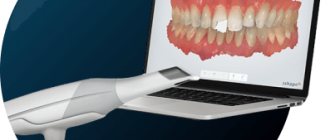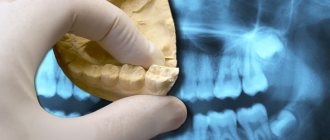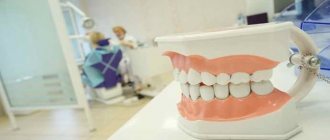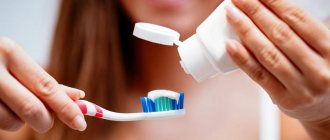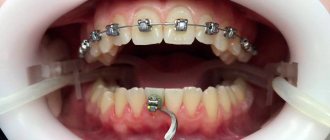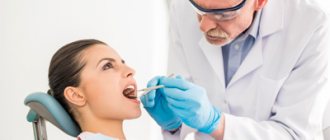Everything you would like to know about correcting your bite and straightening your teeth with braces.
Let's be honest: in modern realities, a beautiful smile is the norm, and it is necessary to get rid of dental imperfections. But, having set such a goal, it is desirable to have reliable information about existing methods and upcoming tests. We tried to collect in one article all the most important things about braces in order to save you from having to look for answers on your own on the Internet, where the truth is mixed with myths and advertising fluff.
Important! In the article, prices are indicated for St. Petersburg and the Leningrad region.
How are braces different from aligners?
This question worries many: is it possible to pay more, but get by wearing transparent removable aligners? The truth is that nice aligners can only cope with minor problems (for example, with one tooth that has grown incorrectly), but only fixed structures - those same “ugly braces” - can create an orthodontic load to shift the dentition.
As for cap-aligners, to achieve the effect, it is recommended to wear them at least 22 hours a day, removing them only during meals. As practice shows, a person often violates such rules by being distracted, forgetting, or simply allowing himself some indulgence. Strictly speaking, aligners are not intended to correct bites, and if they are positioned as such on the clinic’s website, it is better to turn to other specialists.
And the financial point: you will have to pay not more for the aligners, but much more, because during the treatment period they need to be changed at least 15 times (and sometimes much more), so the average minimum cost of correction with the help of aligners should be considered an amount of about 250- 300 thousand rubles.
Early treatment: orthodontic plates and trainers.
- Plates for straightening teeth are familiar to most people for a simple reason: they have been actively used for many decades. They have many types and design options. The most classic ones are plates with screws, which are used to stimulate the growth of the upper (and sometimes lower) jaw. In addition, the plates can be equipped with additional elements: arcs, pushers, and so on. Their goal is to correct the position of individual teeth, but, unfortunately, the accuracy of work comparable to the work of braces is almost impossible to achieve with their help. Therefore, often, plates cannot be the only treatment. The plates should be worn around the clock, removing them only during hygiene to remove food debris.
A plate with a screw for the lower jaw.
- Elastic positioners : trainers, LM-activators, Myobrace and other functional devices are designed to activate jaw growth and eliminate bad habits. In addition, some types of trainers, for example, the Myobrace brand, have cells for teeth (helps teeth erupt correctly, in case of not very pronounced anomalies). Since elastopositioners are double-jawed devices, they cannot be worn around the clock. The wearing scheme is as follows: mandatory evening wear for 2-3 hours (for example, while watching cartoons, etc.) + mandatory night wear.
LM activator
- The functional group includes the Frenkl apparatus and its modification: the Persin apparatus. Perhaps one of the most famous “name” devices. There are 3 main types to correct different anomalies. The principle of operation is similar to elastopositioners: changing muscle balance and stimulating the growth of the upper or lower jaw. The wearing pattern is similar and the effectiveness is comparable to trainers. The difference is that the Frenkl apparatus and its modifications are made of hard plastic and are much less comfortable to wear. In addition, it requires a high level of skill from the technician and physician to properly manufacture and fit it in the oral cavity. Today, elastopositioners are preferable to use precisely for these reasons.
Frenkl's apparatus.
- Double-jaw devices to activate the growth and advancement of the lower jaw. This group includes a twin-block and a Twicare device. Used for distal occlusion (Class 2 according to Angle). They can be used in adults: in this case, the lower jaw does not grow, but only moves to a more anterior position. But in some cases, this is what is needed, since the posterior position of the lower jaw is a fairly common phenomenon.
Twin block device diagram.
- Device for rapid palatal expansion . It has many names: expander, Derichsweiler apparatus and others. There are many modifications, but the essence and active part (screw) is the same. Used to correct narrowing of the upper jaw. It is a non-removable device. Can also be used in adults, but only in combination with surgical support. It has a screw similar to the screw of conventional plates for expanding the upper jaw, only more powerful, as well as a more durable design. The screw is tightened much more often, and accordingly, expansion occurs quickly (due to the divergence of the median palatal suture) - in children it is quite mobile, and in adults it is mobilized surgically. Often, to reduce the lateral inclination of teeth, support is used on microimplants installed in the palate. There are many opinions at what age the use of a palatal expander is justified: most orthodontists believe that the optimal age is 13-14 years, but sometimes the device is placed on six-year-old children based on milk teeth and good results are achieved.
Derichsweiler apparatus
- There are a great variety of different nominal devices, differing in both design and principle of operation. Many of them have long been outdated, many are quite functional, but have more convenient/effective/easy-to-use analogues, some are still relevant today. The main thing is that your orthodontist clearly understands why he is prescribing this or that device.
Quadhelix is a device for expanding the palate.
Installing and wearing braces: does it hurt?
When installing braces, the vast majority of patients do not experience any noticeable pain, but discomfort certainly appears, and you will have to get used to the braces - for some faster, for others longer, on average - 1-2 days. The exception is, perhaps, people with a very low pain threshold or with increased impressionability - it is from them that the myths about the pain of installing and wearing braces come.
In fact, sometimes there is irritation of the mucous membranes of the lips and cheeks. To solve this problem, a special wax is used, which the doctor will definitely suggest after installation.
How long should children wear braces and how to remove them?
On average, children and teenagers wear braces for six months or a year, in difficult cases – up to 2-3 years. The duration of correction depends on a combination of several factors:
- the complexity of the deformation of the dentition - the higher it is, the more time it will take;
- type of installed system - vestibular ones correct the bite faster than lingual ones;
- responsibility of the patient and his parents - it is necessary to strictly follow the instructions of the orthodontist and not miss visits to the clinic.
Orthodontic structures are removed by a doctor in less than an hour. First, the locks are removed (in 10 minutes from one jaw), then the tooth enamel is cleaned of glue, polished, and treated with a remineralizing agent for 15-30 minutes. Additional time is taken by the installation of retainers - retaining structures necessary to prevent teeth from diverging. Fixed retainers can be replaced with hard aligners that are worn at night. You need to use prophylactic agents from several months to a year.
I’ll take off my braces, a couple of years will pass, and my teeth will return to their place... is this true?
But this is true - but from the practice of past years! Now, after removing braces, the dentition is secured using a special non-removable retainer apparatus; previously this was not always done - hence the accumulated complaints. Today, orthodontists are required to install such a device.
A retainer is a thin wire that is installed on the inside of the front teeth and prevents them from moving apart. And this is for the rest of your life, but you shouldn’t worry: the delay is imperceptible, those around you don’t see it, and if it breaks, it’s easy to fix—just don’t delay your visit to the doctor.
Another problem is more pressing: sometimes, after straightening the dentition, previously hidden aesthetic defects (for example, different lengths of teeth) become noticeable. In this case, you will really have to resort to restoration or buy expensive veneers.
Important! The orthodontist must notice such defects and warn the patient before starting treatment.
Pros and cons of plates
They also have their advantages and disadvantages.
The advantages of this type of structure include:
- no labor-intensive care required;
- does not interfere with oral hygiene;
- removed for meals;
- atraumatic;
- easy adaptation;
- high efficiency in childhood;
- affordable price;
- are removed independently.
Orthodontic removable appliances have a few disadvantages.
These include:
- ineffectiveness of correction in adults;
- allergies are possible;
- severe anomalies are not corrected;
- fragility;
- If it breaks, it’s difficult to fix, you have to order a new one.
A number of positive qualities of plates for children ensure their widespread use in pediatric orthodontics.
Price difference
Permanent correction systems and measures for their installation and maintenance will cost the patient much more than corrective plates.
Here is the estimated cost of various types of structures per jaw:
- metal – 30,000 rubles;
- ceramic – 40,000 rubles;
- sapphire – 70 thousand rubles;
- sapphire with a white arc - 80,000 rubles;
- lingual – up to 100,000 rubles.
The cost of the structure itself is not the final price of the entire treatment. The price for all services for installation, activation of the device and its removal is separate. Various types of plate correctors cost from 20 to 50 thousand, depending on the model.
Choosing plates or braces is quite difficult for a non-specialist. The choice of a device for the correction of dentoalveolar anomalies is carried out only by an orthodontist, taking into account all the characteristics of the patient.
Do braces damage enamel and lead to caries?
No, the tight fit of the braces completely eliminates the penetration of food debris and microbes into the tooth; Dental enamel glue used in practice is harmless, moreover, it contains the useful element fluorine. The brace-lock even protects the tooth in a certain way.
But improper care of braces is really fraught with trouble: oral hygiene after installation of an orthopedic structure requires more attention and responsibility due to the increased accumulation of plaque. And where there is plaque, there is caries!
At what age can a child get braces?
Age restrictions for installing braces are relative.
Early childhood is a time for rapid correction of defects. Orthodontists recommend starting treatment at the age of eight. It is at this age that the dentofacial apparatus is not yet fully formed and correction takes a short time with less effort.
The only drawback is the possibility of damage to the enamel. It all depends on the character of the child and the parents. It is necessary to monitor that the child takes full care of the oral cavity (proper brushing of teeth twice a day, using mouthwash after each meal) and the structure itself. In addition, you need to explain to your child that visiting the dentist is not scary or painful.
While wearing braces, you will have to visit the dentist quite often.
The ideal period for bite correction is the age of 12 - 14 years. At this time, the process of loss of milk teeth and the growth of permanent teeth has already ended. The jaw bone is actively growing and it is quite easy to set the teeth in the correct position.
During adolescence, the child can control all hygiene procedures himself (care of teeth, locks) and already understands why the system was installed.
Installation of a non-removable brace system is painless and wearing it brings discomfort only in the first days (adaptation period).
Is it necessary to use additional products to clean braces?
On forums (and sometimes in the recommendations of “experts”!) there are numerous additional products that supposedly make oral hygiene easier in the presence of braces (rinses, ultrasonic brushes, etc.)
In fact, with a responsible approach, it is quite possible to get by with three basic tools (toothbrush, dental floss, brush). In this case, you should not rely on someone else’s opinion. The quality of care will be assessed by a doctor who conducts regular examinations, and he will also recommend additional remedies, if necessary.
Is there a need to give up your usual food?
As a rule, when installing a brace system, the doctor will actually announce “forbidden” foods, and this list looks quite depressing (cookies, chips, seeds/nuts, crackers, chewing gum, pizza, chocolate bars, etc. - everything that can stick to the structure , creating conditions for the proliferation of microbes, or damaging it). But in this case, the doctor’s recommendations should be approached in a differentiated manner: there is a clear reinsurance here, the only thing that is actually required from the patient is caution.
What are dental braces and how do they work?
A bracket system is a combination of several elements: locks attached to the surface of the tooth and an arch connecting them. Depending on the design features, ligatures can additionally be used - wire or elastic rubber rings to secure the fasteners. The operating principle of the system is based on the elasticity of the metal arch, which tends to return to its original shape, thereby gradually straightening the dentition.
Braces systems are divided into several types:
- by type of fixation on the jaw - vestibular (external) and lingual (internal);
- according to the method of fastening the locks - ligature and self-ligating;
- according to the material of manufacture - metal, sapphire, ceramic, plastic, combined.
Braces can be installed on both jaws or on one jaw. The second option is usually practiced in cases where only the lower or upper row of teeth is deformed. However, the orthodontist may recommend a phased installation of two systems; if the defects on one of the jaws are less pronounced, less time will be required for correction. In addition, a pause between procedures makes it easier for the child to get used to the structures.
At what age do children get braces?
The optimal time to install braces for children is considered to be adolescence - from 12 to 14 years. This opinion is shared by most orthodontists, since the tooth enamel in adolescents is already quite strong, but at the same time, the dentition can be easily and effectively corrected.
Sometimes it is practiced to install permanent structures earlier, after the child reaches 7-9 years of age. It is recommended to install braces at this age for two main indications:
- diastemas (large distances) between the molar central and lateral incisors, which look unaesthetic and prevent the correct eruption of the canines (there is too little space for them);
- displacement of the front teeth back, forward or their rotation around their own axis.
A necessary condition for installing a bracket system at an early age is the presence of all molars and first molars with sufficiently strong enamel. At the same time, they are placed partially, precisely on these 6 teeth, and the system itself is called “2x4”. This approach allows you to correct the dentition quickly and effectively, without unnecessary material costs in the future.
Note! It is best to put braces on a child 12 years of age or older, when it is possible to install a full-fledged structure, but even then, an important condition for successful treatment is contacting an experienced orthodontist.
Early installation of braces without thorough preliminary research and subsequent monitoring can cause root resorption, enamel destruction, and tooth loss. At the YuliSTOM clinic, specialists have the required level of qualifications and select an individual correction program taking into account all the characteristics of the small patient.
Installing braces for a child
Is it true that sapphire braces are the best?
Sapphire braces are much more expensive than iron braces, but their advantages do not lie in the effectiveness of treatment. Moreover, in reliability they are inferior to metal ones. But on the teeth, such brace systems look much more aesthetically pleasing, since transparent brace locks are almost invisible.
Let us clarify: the precious natural stone sapphire has nothing to do with the production of such briquettes; we are talking about artificially grown crystals.
By the way, there are also cheaper transparent braces - ceramic (much more expensive than metal ones, but not as expensive as sapphires) and plastic designs. Only the former are too fragile and unstable in relation to food dyes (can lead to yellowing of teeth), and the latter are intended only for short-term use.
Which braces are best for a child?
Wearing orthodontics is a long process, and the structure is almost always noticeable on the teeth. If the question arises about when to get braces for a teenager, he often refuses for fear of ridicule from his peers. Modern dentistry offers systems that differ in appearance and cost. The specific type is determined by the doctor, based on the volume of treatment and the condition of the teeth. You can discuss options with him and choose the one that suits parents and child.
The most common types of braces used in children are:
- Lingual. This design is attached to the inner surface of the tooth, maintaining a natural smile. Their effectiveness is not inferior to conventional metal ones, but there are significant disadvantages - due to the peculiarities of their location, it is more difficult to maintain hygiene and notice damage to the enamel in a timely manner; the wear period is usually extended. Also, lingual braces interfere with the tongue when pronouncing sounds, so a common side effect is impaired diction.
- Metal. Such braces have been used for a very long time and have proven their effectiveness even in the most advanced cases. When metal braces are recommended for children, age plays a special role. They are inexpensive compared to their analogues, but are too noticeable on the teeth, so they are not very popular among teenagers. In addition to the price, the metal structure is distinguished by its reliability - the system holds up well and is difficult to damage.
- Sapphire. Made from artificial sapphires, they are almost invisible on the teeth due to the transparency of the material. The smile remains completely natural, and this makes this type of braces very popular. But they have two main disadvantages - fragility and price. The cost of the structure is approximately 1.5 times higher than its metal counterpart, and is also noticeably inferior in wear resistance.
- Unligated. The absence of ligatures - connecting elements for fixing the arch - makes the braces less noticeable. But these are not the only advantages. It’s easier to care for your teeth with such a system, and you can visit the doctor less often, because you don’t have to replace fasteners. The main and, perhaps, the only disadvantage is the cost: it is noticeably higher compared to simple metal ones.
- Ceramic. This type of braces is made from dental ceramics, so they are almost invisible on the teeth, and the quality of correction is comparable to metal. They are quite durable, but at the same time they cost significantly more and are difficult to maintain. If the child is already a teenager and can handle hygiene independently, a ceramic system will be an excellent solution.
- Plates. These are not exactly braces, but essentially they also belong to orthoconstructions. They are inexpensive, easy to care for and comfortable to wear. But with the help of plates, only minor violations can be corrected at an early age, when the jaw is still growing. It can not be used all day long or from an earlier age, so this alternative to braces is well suited for preschool children.
Installing braces scares many people: children because of the visibility of the structures, parents because of the price, and everyone together because of the complexity of the procedure and care. But often orthodontic structures are the only way to make a beautiful smile and maintain oral health. And if you have problems with your bite, then this is also a way to maintain proper digestion and clear diction.
We told you at what age children get braces and what kind they are. Take care of your teeth, consult a doctor in a timely manner - and then the reflection in the mirror will delight you with a beautiful smile!
How much do simple metal braces cost?
The remarkable cheapness of hardware is just a myth supported by some clinics. Indeed, by indicating the cost of one element of the braces system, they create the illusion of affordable treatment, but the patient should understand that the treatment process involves paying for braces, dental materials, multiple visits to the doctor and various procedures, including removal of the system at the end of treatment - and all this will cost at a very decent amount.
On average, the price of a course of treatment in an ordinary case (healthy teeth, simple defect) is 150-170 thousand rubles. (and this does not take into account preliminary professional teeth cleaning and diagnostics). If you have tooth decay and/or gum problems, you should add the cost of treatment or surgery to this amount. After removing the braces, you will have to pay for the installation of retainers, and, if necessary, restoration or installation of veneers.
Important! There is no point in finding out the cost of braces over the phone, since each case is individual; choose the clinic where they will tell you the amount of all necessary procedures and operations - so to speak, the amount of “turnkey” treatment.
How to persuade a child to get braces?
Fortunately, the days when unsightly braces became a reason for bullying at school and in the yard are gone. Today, braces have become much more aesthetically pleasing, and orthodontic treatment has become firmly established in our lives, and thanks to the same movie stars, it has become significantly popularized. Examples of bite correction by your favorite actors and singers, as well as peers, can help your child cope with embarrassment. A thorough conversation about the benefits of treatment and the future of a perfect smile will help a teenager decide to get braces.
What are the advantages of ligature-free braces? And do they exist?
Ligatures are wires or elastic rings with the help of which bracket locks are attached to the arch. In ligature-free bracket systems, the arch is inserted into a special clip, and ligatures are not needed.
Self-ligating braces (also known as self-ligating braces) have been aggressively promoted for some time, causing their prices to rise. However, time and practice have shown that the advantages attributed to such systems are absent (including the myth about the special strength achieved due to minimal friction of the archwire with the bracket locks).
Are lingual braces worth their high cost?
The most expensive lingual brace systems today are much more expensive than expensive sapphire braces; correction costs the patient up to 500 thousand rubles. But progressive doctors have already abandoned this solution, the only advantage of which is invisibility to others due to installation on the inside of the teeth.
This only advantage is greatly diluted by numerous disadvantages: adaptation to such systems is more difficult and longer (up to several months), the likelihood of injury to the tongue is high, the effect on diction is more pronounced, the requirements for caring for them are stricter, and recovery in case of peeling is more difficult.
How to choose the type of braces for a child
There are many braces systems, and you can choose the appropriate option by consulting with an orthodontist. The choice will depend on the complexity of the anomaly and the duration of wearing the device.
The type of construction is selected not only based on the amount of work to be done, but also depends on the child himself.
Correction system by location:
1. Lingual.
They are installed on the inside of the dentition and are practically invisible. The disadvantage is longer wearing due to the lower degree of impact and the high price in relation to the vestibular system.
The design is similar to the vestibular orthodontic device, but requires special skills and appropriate qualifications from the doctor during installation.
2. Vestibular.
Mounted from the front (front) side. Able to cope with large bite defects.
There are:
- Ligature - the arc and plates are fastened with rubber rings or wires;
- Non-ligating (self-ligating) - the arch is secured with a lock that fits into each bracket - plate.
The ligature system requires the installation of a larger bracket, and the rubber bands require replacement over time.
Self-ligating construction is more expensive, but with its help defects are corrected faster.
The choice of the entire design should be based on the purpose of use and duration of wear.
Is it possible to put braces on only one jaw?
Many patients are perplexed: why, if, for example, 1-2 upper teeth are displaced, why install a system on the entire jaw. The desire to minimize inconvenience and costs is quite understandable, but the realities are different: teeth are straightened not by braces, but by the device that is attached to them, and the force of its influence must be uniform, which requires fixation on the entire dentition. Otherwise, the “crooked” tooth will fall into place, but will inevitably push others out of the row.
The concept of a “partial bracket system,” however, exists - such systems are installed on one jaw and cost half as much. However, such a correction is possible only in the absence of bite pathologies and strict symmetry of the teeth of the upper and lower jaws, when there is only a slight curvature of 1-2 teeth (according to statistics, in orthopedic practice there are no more than 5% of such cases).
Differences in mechanism of action
Correction devices differ in their mechanism of action. Plate designs have one or more screws. They allow the growing jaw to expand, making room for permanent teeth. Metal arches correspond to the correct position of units in the dentition. The device cannot have a significant effect on the jaw. She cannot move dental units over a significant distance. It is used when there is no need to move it over long distances. It copes well with tilting and turning individual units. It is also used in young children to prevent malocclusion or to change the width of the growing palate.
Appliances for permanent wear have a wider range of possibilities for correcting malocclusion and dentition defects. The systems are able to place the tooth in the required place by pulling it out of the alveolus. Braces can immerse it deeper into the jaw, tilt it in the required direction, or rotate it relative to its axis. Unlike removable appliances, they are capable of correcting serious disorders of the dental system, and not just preventing them.
Is it possible to install and wear braces during pregnancy?
Pregnancy is a period of serious changes in a woman’s body, including, among other things, bone tissue, tooth roots and bone plates. This is definitely a stressful condition, which should not be aggravated.
Thus, it is strictly forbidden to begin correcting the bite if there are plans to expand the family or in the process of bearing a child, and if an unplanned pregnancy occurs during the current course of correction, the brace system must be removed as quickly as possible.
When can you get braces: basic indications
A beautiful, even smile is also an indicator of status, as well as a significant plus in the treasury of external attractiveness. There are certain medical indications for the installation of orthodontic systems. Let's consider cases when braces are placed on children's teeth. Most often, the doctor recommends treatment for the following problems:
- Malocclusion. Normally, when the jaw is closed, the upper front teeth, including the canines, cover the lower ones, and the premolars have close contact. If there are deviations in any direction, problems with speech or closing the teeth when chewing may occur. Also, this position of the teeth negatively affects the joints - they can wear out excessively. This leads to gastrointestinal problems and headaches.
- Dystopia. This is a situation when, due to its location, a tooth is knocked out of the general row. The consequences are not only cosmetic, but also functional - changes in the bite, trauma to the mucous membrane, difficulty in the eruption of adjacent teeth. In such situations, when visiting a doctor for a consultation, when it is possible to put braces on a teenager, it is better not to delay.
- Abnormal dental density. In this case, we are talking about crowding or the reverse process - the formation of cracks. There is an excessive load on the enamel, food gets stuck in the interdental spaces, which leads to caries.
- Disproportional development of the jaws. This often happens due to the habit of chewing hands or fingers in childhood. The jaw joints are overloaded and wear out quickly. Food is poorly chewed, which affects the functioning of the digestive system. Be sure to consult an orthodontist if your child has such problems.
At what age is it better to start correcting a child’s bite?
The optimal age to begin orthodontic treatment is after the formation of the bite is completed (usually at 11-12 years). Why shouldn’t you follow the recommendations of some clinics that invite patients aged 7-9 years for treatment?
The answer is provided by the results of a scientific study of tooth growth and bite formation in children, which showed that the curvature of the dentition during the period of replacement of milk teeth with permanent teeth is not indicative and does not require intervention, since the dentition gradually straightens naturally (for example, the lateral teeth eliminate the gap between In front of them).
This, of course, does not mean that you should not visit a pediatric orthodontist if you see reasons for concern. The primary bite is formed by the age of 3-4 years, and from this age you can consult with specialists. But you shouldn’t start treatment unless there are good reasons for it.
Finally, a general recommendation: the patient does not have to agree with the doctor’s opinion in everything if it seems erroneous. Consult another clinic, get an alternative opinion, because we are talking about your health, about your appearance, about your money, finally. Get treatment from those you trust!
When to contact an orthodontist for braces?
The best time for the first consultation with a doctor is 3 years. At this time, the primary bite has already formed, and the doctor will immediately see problems - existing and potential. If necessary, the dentist will prescribe treatment that will help correct tooth growth at the earliest stages of the formation of the dental system and save you from complex orthodontic treatment in the future.
Follow-up and consultation will help you correct problems in a timely manner or follow the plan established by your doctor. Then the braces will be placed at the most optimal time, and the child will experience the correction without negativity or frustration.
A beautiful smile starts in early childhood!


